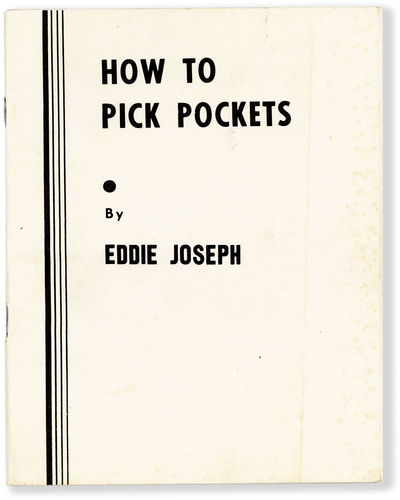
Summary of “How to Pick Pockets by Eddie Joseph”
Eddie Joseph’s How to Pick Pockets is a treatise focused on teaching the art of pickpocketing exclusively for entertainment purposes, blending psychological theory, practical techniques, and performance strategies for magicians. Below is a condensed overview of its core content:
Purpose and Context
The work is framed as a guide for conjurers, emphasizing that “stealing” here refers to undetected removal of objects (not illegal theft) to enhance comedic or surprising elements in magic acts. Joseph draws inspiration from a 1923 Indian National Exposition, where a magician’s pickpocketing routine captivated audiences, highlighting the entertainment value of such skills.
Theoretical Foundation
At its core, the method relies on psychological misdirection and exploiting the victim’s “mental state”:
- Preoccupied Attention: Pickpocketing succeeds when the victim’s mind is distracted (e.g., in a crowd, rushing, or reacting to a collision). The human mind can only focus on one thing at a time, making the victim oblivious to subtle hand movements.
- Cover Actions: Like magic, overt actions (e.g., “accidental” collisions, adjusting the victim’s position, or searching for a “vanished” prop) mask the actual theft. The force of a collision or pressure from hands “dulls” the victim’s sensation of the theft.
Practical Techniques
Joseph details step-by-step methods to steal common items from various pockets, emphasizing timing and cover:
| Target | Key Methods |
|---|---|
| Handkerchief (Breast Pocket) | Three methods: Using shoulder pressure to distract while pulling the handkerchief; bending the victim to “sit” to mask the theft; or wheeling the victim to block audience view during extraction. |
| Pen/Pencil (Outer/Inner Breast Pocket) | Pushing the victim backward to mask grabbing the pen; or “searching” for a vanished prop under the coat to retrieve the pen, hiding it in the palm or sleeve. |
| Wristwatch | Pressing firmly on the watch face to “numb” sensation, then jerking it off quickly—leaving the victim unaware due to lingering tactile illusion. |
| Trouser Braces/Garters | Undoing buttons under the cover of a “search,” then pulling braces as the victim walks away, causing comedic panic as they rush to hold up their trousers. |
Performance and Rehearsal
- Delivering the Goods: Stolen items are returned with humor (e.g., asking the victim for a handkerchief, then producing their stolen one; “finding” their wallet when they reach for it).
- Rehearsal Tips: Practice with a tailor’s dummy or a chair draped in a coat to simulate the victim, avoiding reliance on human volunteers who may grow impatient.
Advice for Practitioners
Joseph stresses enthusiasm, timing, and public performance:
- Timing is Critical: Even skilled sleights fail without precise timing, mirroring the importance of rhythm in magic or sports.
- Public Feedback: The first audience applause for a pickpocketing routine is a powerful motivator, far more instructive than private practice.
In essence, the work demystifies pickpocketing as a theatrical skill, merging psychology, misdirection, and technical precision to entertain—never to harm.
Comments0